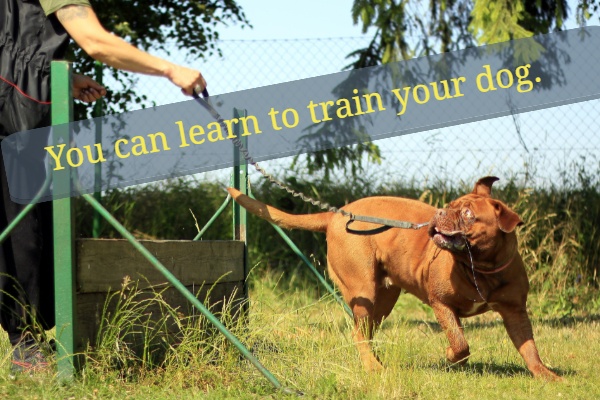
The dog training methods post contains affiliate links. Learn more on my Affiliate Disclosure page.
Most professional dog trainers use a combination of seven dog training methods that work. This article highlights key elements from each type of dog training method. The purpose is to help you decide which training program will work best.
Professional dog trainers don't always agree on the best or most ethical method. As a result, trainers usually combine other different dog training methods that work in tandem.
K9 Training Institute Free Workshop
Discover the K9 Training Institute's Free workshop, explicitly designed for high-energy dogs. Join now to gain valuable insights into K9 TI's proven training methods.
The workshop focuses on fostering a strong connection between you and your pup, highlighting the application of positive reinforcement techniques that ensure an enjoyable learning experience for both canines and their owners.
Does your dog tug on its leash, bark constantly, and won't come when called? Sign Up and get the FREE Obedience Training Workshop Now!
Dog Training Methods
1. Positive Reinforcement
Positive reinforcement is generally considered the best dog training method and most popular. However, this type may not always be easy when praising with a reward every time your dog performs a task.
Positive reinforcement is a fundamental principle of Operant Conditioning.
The dog trainer controls the dog training session's environment. Specific locations, i.e., "busy street corners," are designed to trigger pleasant or uncomfortable behavior consequences.
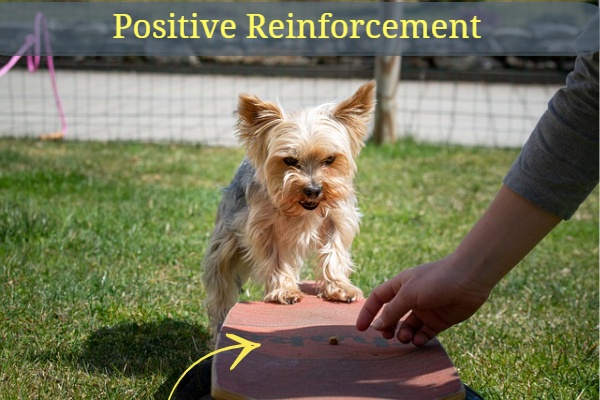
Most dog trainers use some form of positive reinforcement training. However, trainers must follow specific guidelines concerning "what to do and not do."
Training Do’s
Praise and Reward
Since dogs are spontaneous animals and you are training your dog to "come to you when called," immediately give treats and praise whenever they do what you ask.
Remove Treats Gradually
Once you feel the dog understands your commands and obeys them. Then you can begin cutting back on the treats until they are no longer needed.
Your affection and praise replace the treat ritual. Dogs instinctively want to please their trainer. So it doesn't take long before your dog obeys your commands without getting a treat.
After developing a positive relationship with your dog, affection phrases replace the treats.
Trainers can use their voice and make a sound like "shee" or use a clicker to signal correct behavior followed by a treat. Then, you gradually stop giving treats.
Your dog will continue to associate the sound and perform tasks without treats.
Make Training Sessions Short and Enjoyable
A dog training session should last less than 15 minutes, be fun, and always end well. As a result, you will have prepared your dog for the next training session.
Training Don’ts
Complicate Training
Don't say "lay-down" when you want your dog to lie. The correct command is "Down" reward after he lies. Don't mix commands; keep them simple so your dog can understand the proper behavior you want.
Stop Correcting Bad Behavior
Positive reinforcement training may confuse some dog owners by making them believe you can't say no to their dog. However, it would be a good idea if you always stopped inappropriate and corrected unwanted behavior.
The goal here is not to confuse your dog. Therefore, you should separate "unwanted behavior correction" sessions from "positive reinforcement" training. Never combine the two training sessions.
Be Inconsistent
Don't confuse your dog. Stay constant. For example, Don't say NO for a specific behavior and later say YES and reward your dog for the exact behavior. For instance, say NO to stop your dog from jumping onto your couch. Later you invite your dog to sit on the couch with you.
Dual signals can and will confuse the dog as to what you want him to do. It is also essential that every member in your household use the same commands, or your dog will have difficulty figuring out what behavior each person wants.
Positive Dog Body Language
Positive reinforcement training depends on understanding a dog's body language and how you can communicate with them.
The American Kennel Club provides more information on understanding and reading your dog's body language.
2. Clicker Dog Training
The Clicker training method uses positive reinforcement. The only difference is a clicking sound is made with a small handheld device after the dog does the correct behavior. Some trainers refer to this identical training technique as Mark and Reward.
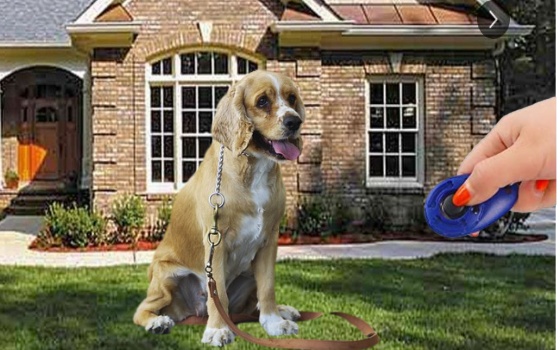
Dogs will repeat certain behaviors that reward them. The clicker tool is excellent because its instant sound tells your dog he will get a reward for doing the exact behavior you want.
The Click method is outstanding for training your dog to learn new tricks. You can also enhance basic behaviors into more complex and complicated tasks.
The clicker is excellent for learning new behaviors and stopping unwanted behaviors. When used in tandem with other dog training methods, you get a dog obeying your commands.
3. Electronic Dog Collars
What Is Citronella Spray?
Scientists developed citronella oil primarily to repel mosquitoes.
How it works
Citronella chemicals are in electronic collars designed to stop dogs from barking. A microphone is attached to the electronic collar. The citronella spray is discharged towards the dog's muzzle when it detects barking.
Before you use an anti-barking electronic collar, I suggest you first consult with your veterinarian. Don't use an electronic collar if your dog has a medical condition or breathing problems.
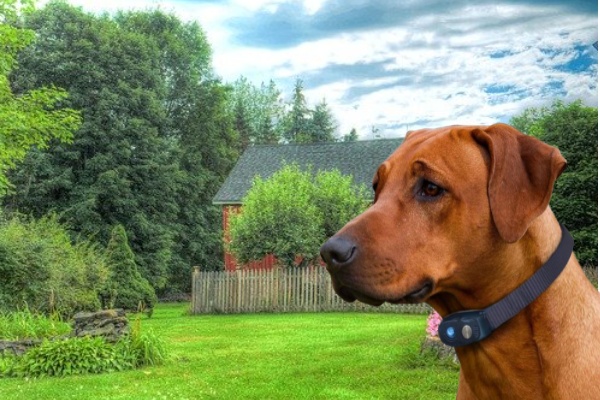
Electronic Dog Collars For Training
Pros
Cons
• Used primarily for bad behavior punishment.
• Confusing dogs, they learn what they cannot do instead of what they should do.
• Misuse creates stress and anxiety.
• Negative results when improperly used.
• Unnecessary pain, both psychologically and physically.
• Citronella is toxic if a dog chews on the collar.
• Citronella can irritate your dog's skin, causing rashes.
Electronic training is best suited for professional trainers, not new dog owners. Therefore, if you plan to go the electronic training route, I highly recommend that you first consult with a trained professional.
Most training experts will suggest that beginners consider using other different dog training methods that work.
4. Scientific Dog Training Methods
Scientific dog training is about understanding a dog's nature. It identifies methods used to condition dogs to execute certain behaviors and evaluates the effectiveness of rewards or punishment.

Modern dog training methods depend on operant conditioning, mostly involving positive reinforcement and less effort on punishment techniques.
Some scientists feel it is essential to discover how to strengthen a dog's good behavior balance without relying on rewards.
The goal is to evaluate the natural psychic of dogs and learn new ways to enhance off-leash training relationships between dogs and their owners.
New scientific experiments and studies help professionals to learn more about dog psychology. In addition, other dog training methods incorporate scientific training practices.
Bill Grimmer, a professional dog trainer, gives us more insight on how to correctly train your dog using scientific dog training methods that work.
5. MODEL-RIVAL (MIRROR) TRAINING
The purpose of mirror training is for dogs to learn to perform tasks by observing and receiving rewards.
Some professionals feel the model-rival and mirror are today's most effective dog training methods.
Dog trainers have used the human model to perform the desired behavior, or it can be a rival competing for a reward. That's how dogs learn to imitate behaviors by watching humans or other dogs.
Dogs will watch the modal's behavior and learn how to do the tasks correctly to receive a reward.
The rival training method uses competition where the model performs a specific task quickly and correctly for reward. This method incentivizes dogs to learn how to do the same jobs much faster.
Mirror training is similar to model-rival. However, dogs still get rewarded for imitating good behavior.
Dogs are naturally sociable by instinct. They learn by watching other dogs do things for a reward.
Dog trainers like this method because they get results comparable to positive reinforcement or operant conditioning training. Some trainers prefer this method due to it feels more natural.
If you and your dog have a strong bond and he follows you everywhere, observing what you are doing. This technique can replace standard training sessions and may feel comfortable to use.
6. Alpha or Dominance Dog Training
Pack Mentality
Due to their descent from wolves, dominance or Alpha Dog training theory compares dogs to pack animals based on their inherent mentality. The Alpha dog is the leader who establishes the pack boundaries.
Your family becomes the pack, and you assume the dominant leader role.
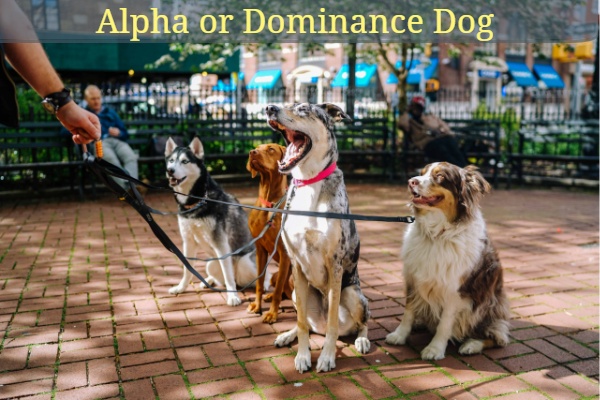
Dominance or Alpha Dog Example
When your dog wants to eat from its bowl, you make him sit and wait calmly for your command “Eat” before he can take the first bite of his food.
The dominance dog training method requires you to control a dog's movement within your household. You set the house rules, i.e., dogs are not permitted to jump onto furniture, beds, couches, or guest.
Do not lower yourself to your dog's level. Your dog may interpret this as a signal of equal pack status. To succeed, you must always be the boss.
An excellent example of dominance dog training is Cesar Millan. He is a strong supporter of the Alpha dog training method that was made famous through his television show "Dog Whisperer."
The use of dominance training helps stop unwanted behaviors. However, many trainers feel this method is old-fashioned and use more modern techniques instead.
This method falls short of identifying the reason for the bad behavior. In addition, the dog may develop anxiety feelings and become fearful.
Maintaining dominance is an ongoing struggle; consistency and reinforcement are essential. It can be a dangerous and challenging task for children or seniors.
7. Relationship-Based Dog Training
For a successful training experience, it is essential to have a strong relationship between dog and pet parent. Relationships are based on positive communication before, during, and after each training session.
According to the American Kennel Club, you listen to your dog by observing their natural body language. They will tell you their feelings, i.e., happiness, anxiety, curiosity, hostility, illness, and fear.
Your dog communicates to you by using three observable activities:
Your dog speaks to you by using three visible activities:
Body language
Vocalizing
Suggestive Behavior
Functional Dog Training Methods That Work



